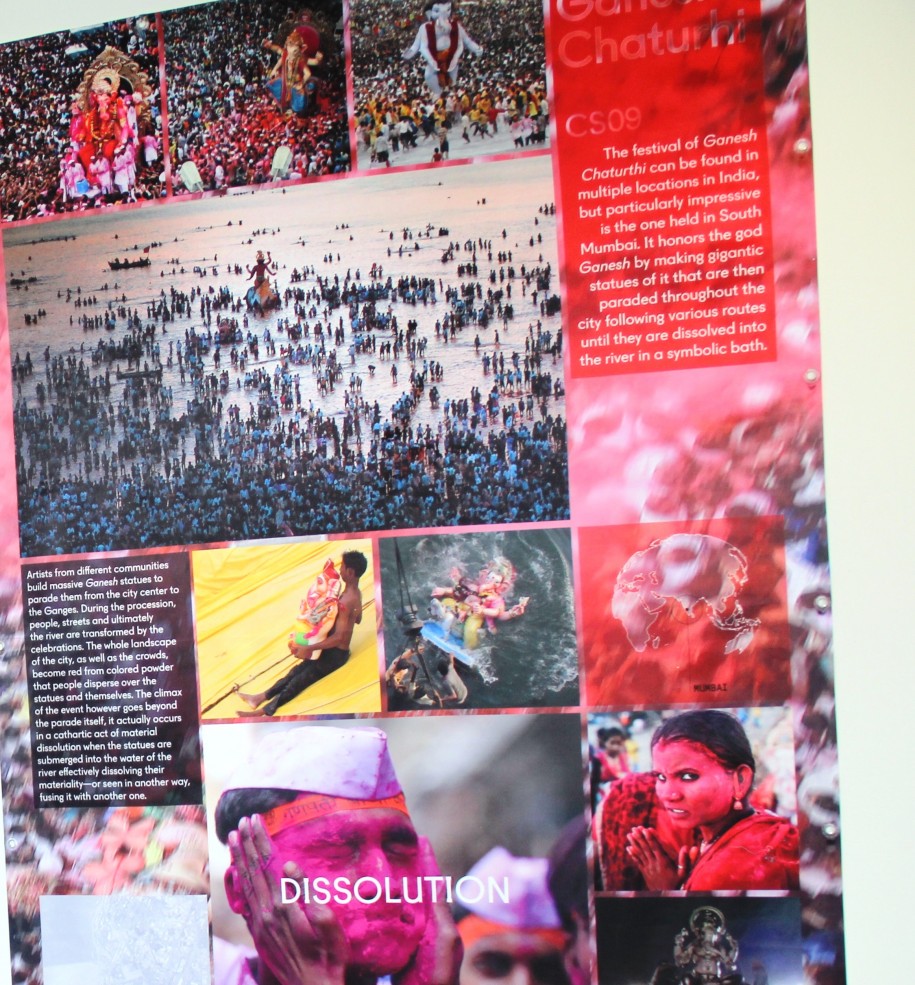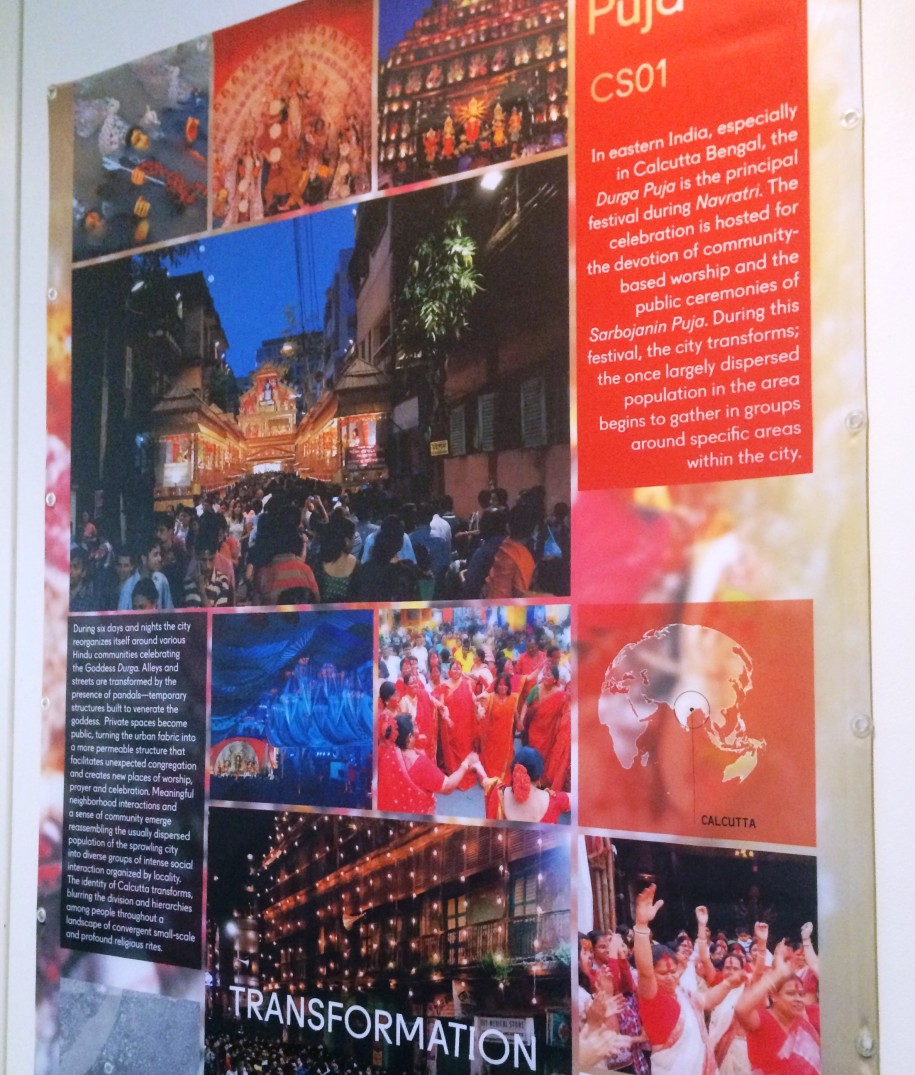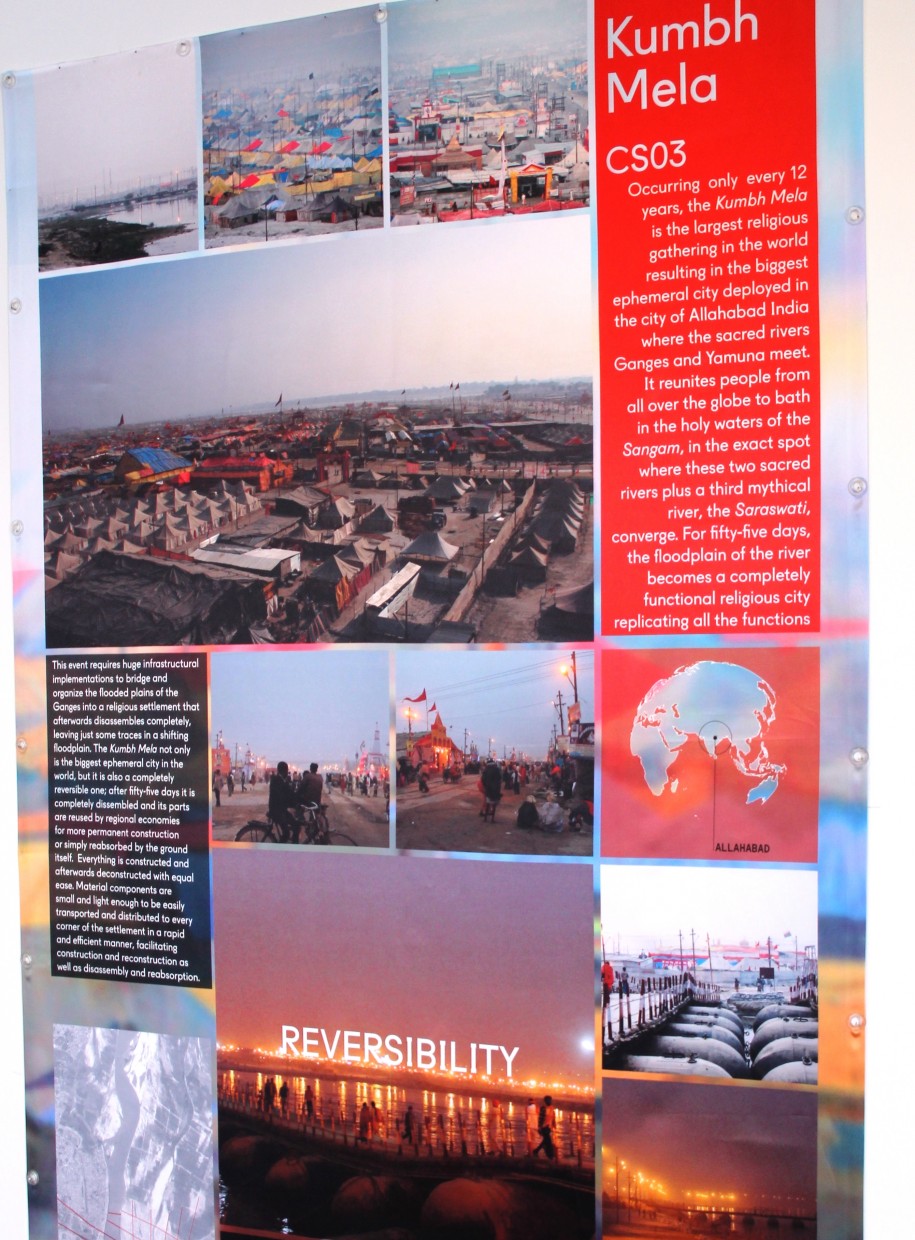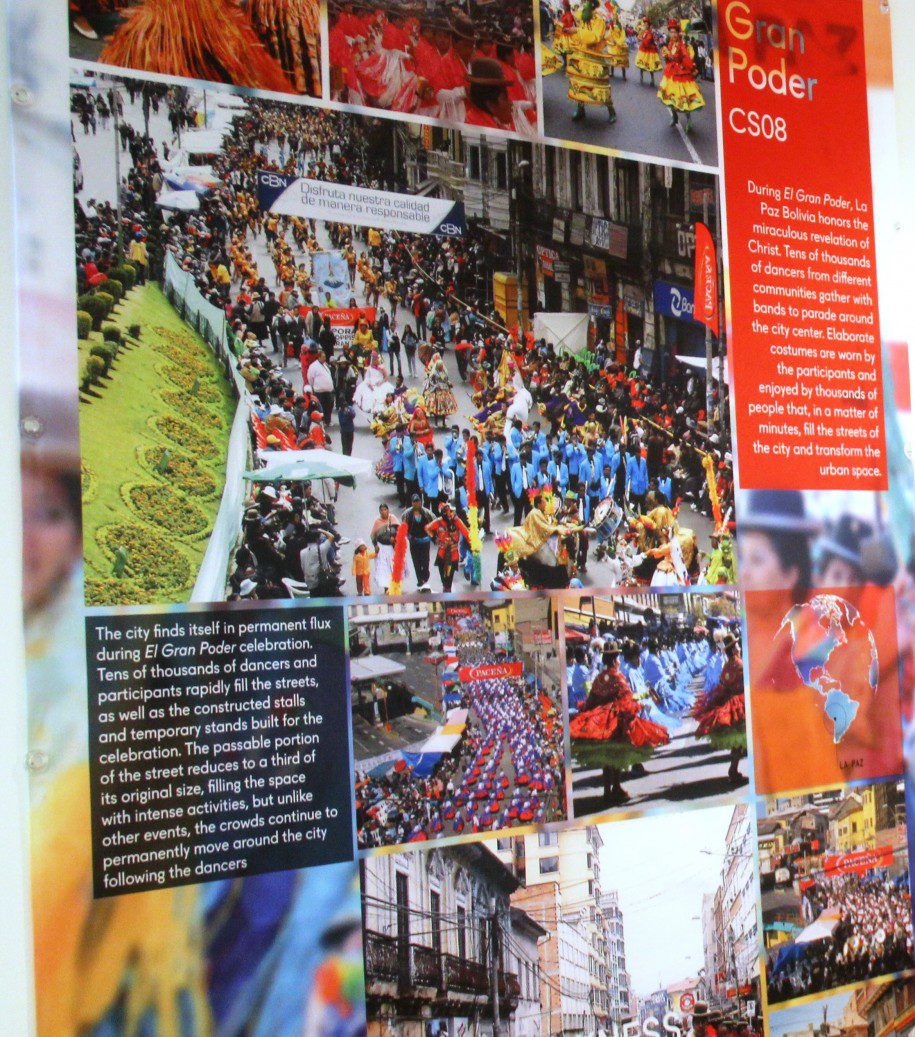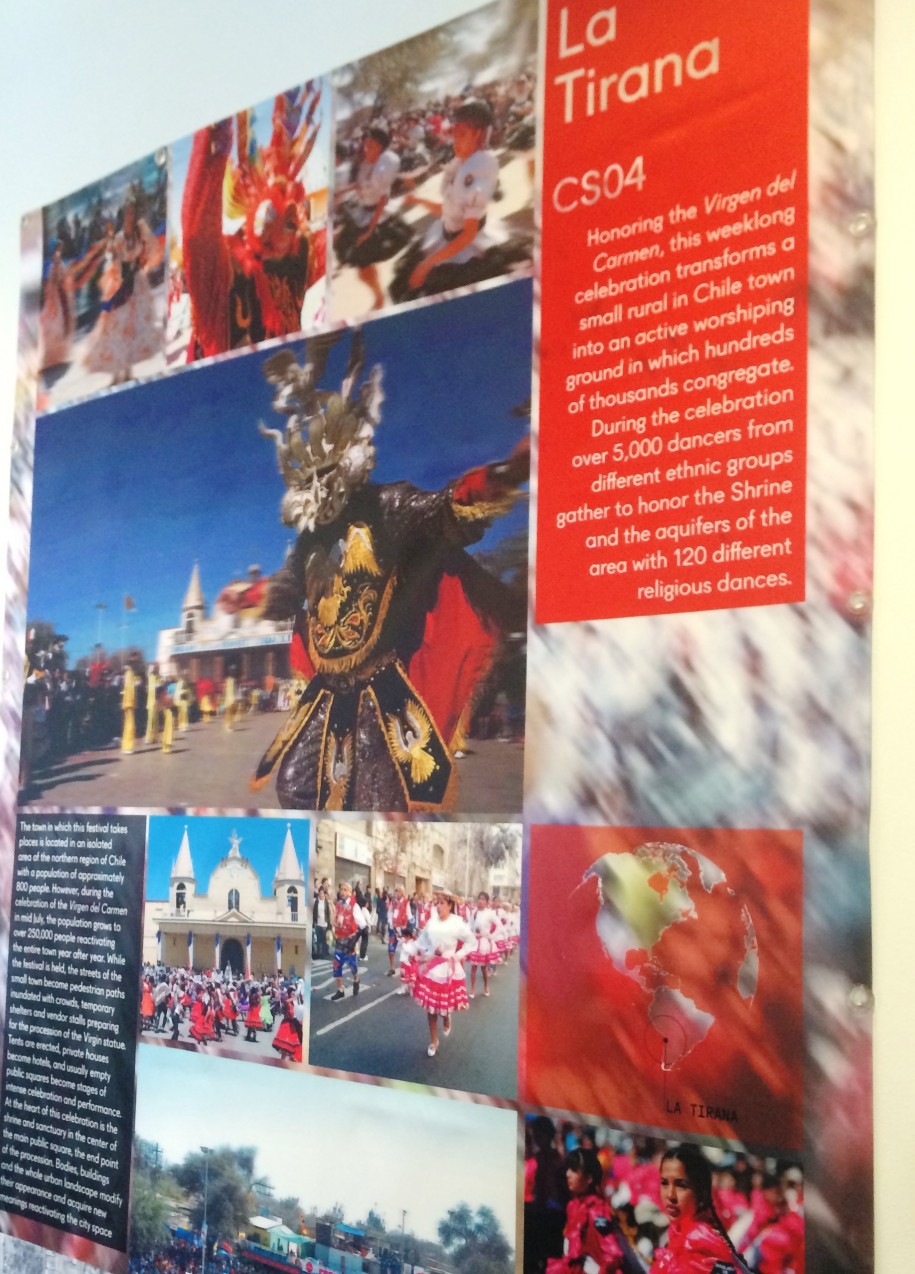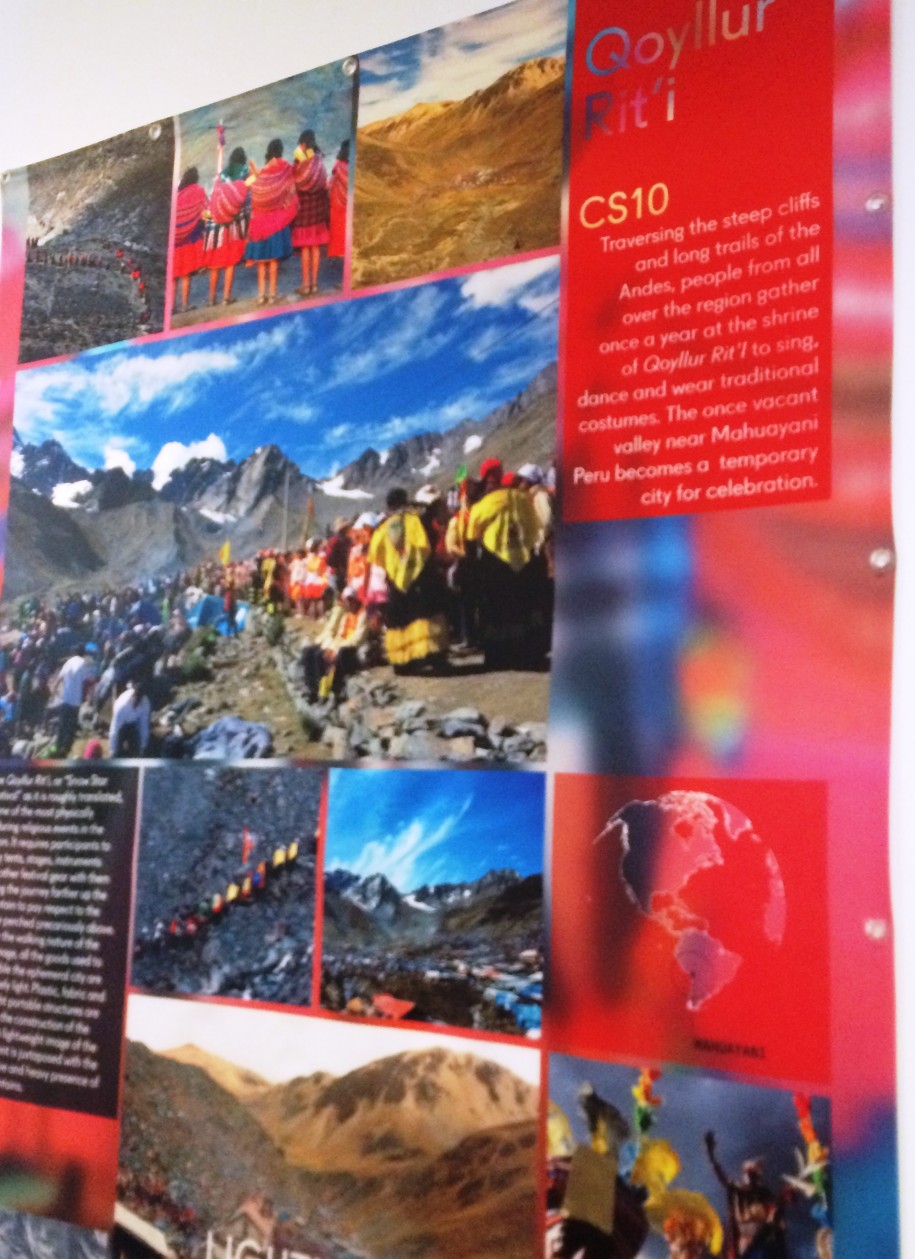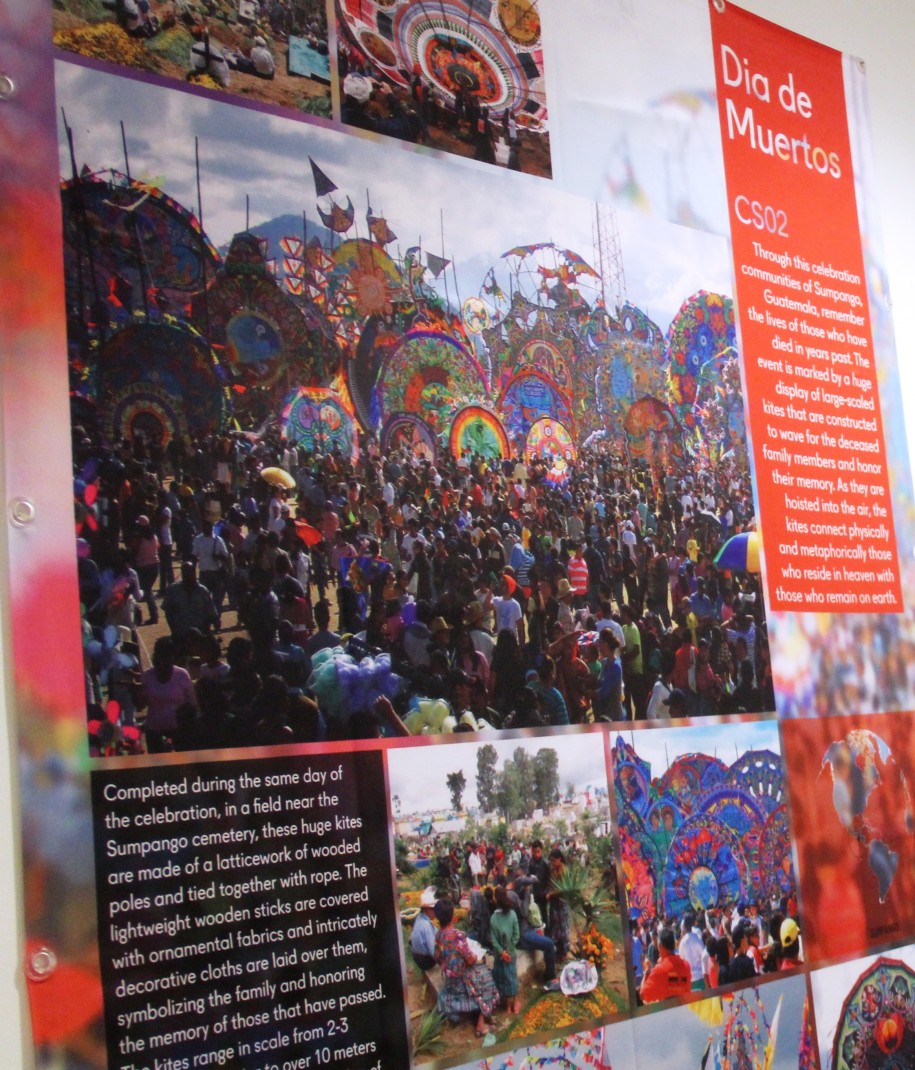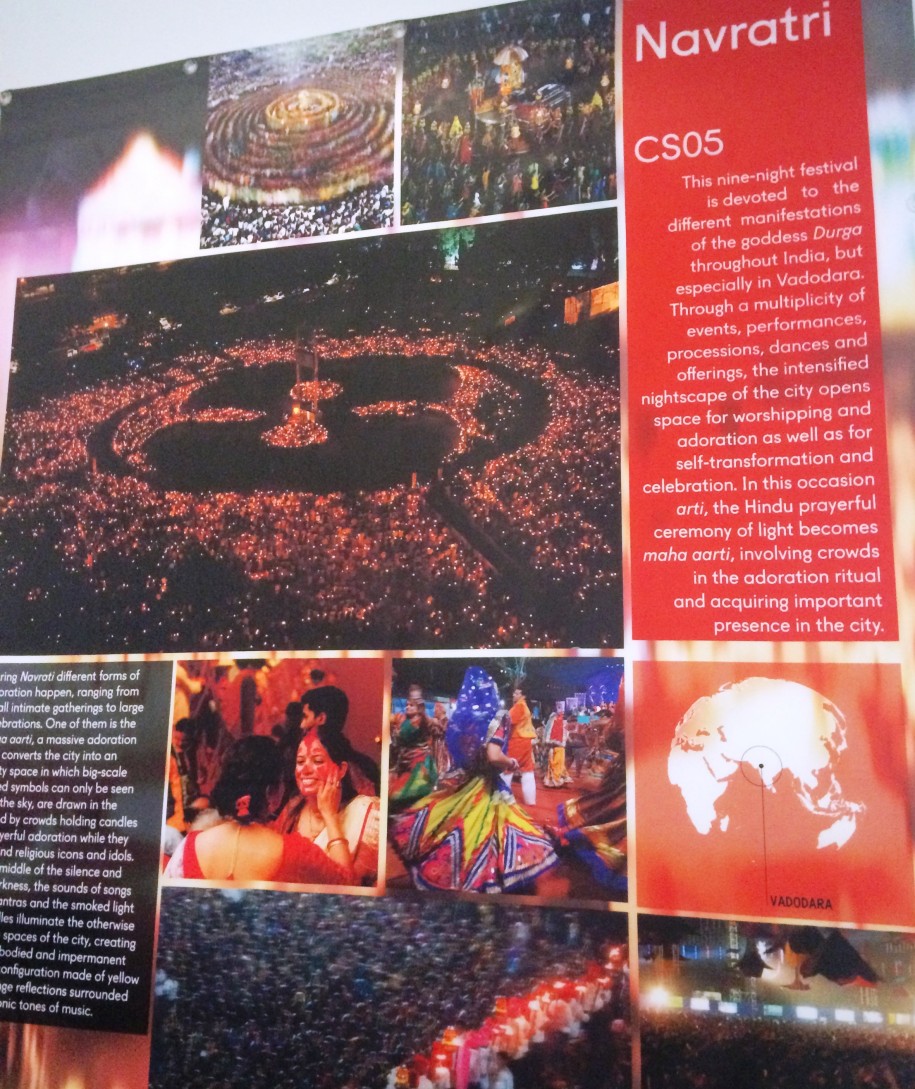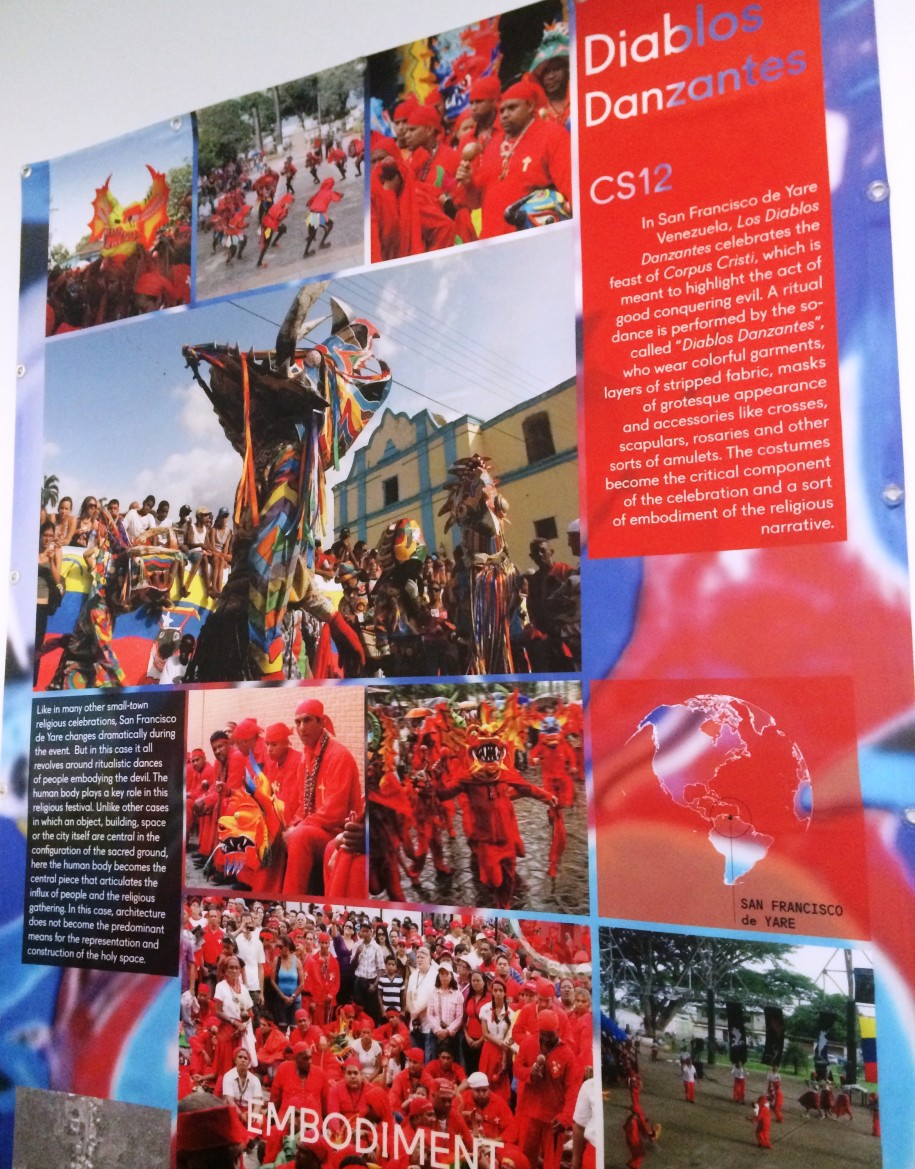The exhibition Temporary Landscapes of Religion in South Asia and Latin America, which is now on display at Harvard, looks at ephemeral urbanism of various religious festivals in Latin America and South Asia.
In partnership with the Harvard David Rockefeller Center for Latin American Studies, the project is led by Rahul Mehrotra, Professor of Urban Planning and Design and Chair of the Department of Urban Planning and Design, GSD, and curated by Felipe Vera, Universidad Adolfo Ibañez, Chile, and Jose Mayoral, GSD.
SAI, in partnership with the David Rockefeller Center for Latin American Studies is hosting a seminar on Wednesday, April 22, 2015: The Ephemeral City: Looking at Temporary Landscape of Religion in South Asia and Latin America.
About the exhibit:
Religion, a taxonomy of the ephemeral city, is constituted by cases in which the urban space is modified, totally transformed or even created in order to facilitate the practice of faith. These cases present thoughtful strategies for ephemeral configurations deployed to celebrate religious beliefs. Some of the cases in this exhibition go as far as generating temporary megacities from almost nothing, such as the ephemeral constructions set up for the Qayllur Rit’I and the Kumbh Mela.
Others convert streets into open temples, such as the light constructions made annually to host the Durga Puja in Calcutta, while others transform massive regional infrastructure into a procession path, as in Lo Vázquez, Chile. Among others, the cases shown in this exhibition help us challenge the pace at which the generic city is progressively constructed, showing us how the intensity of the events stretches the physical and symbolic boundaries of the everyday functional spaces.
The exhibit will be on display until July 2015 in CGIS South, Second and Fourth floors, 1730 Cambridge Street, Cambridge, MA, open to the public Mondays through Thursdays 7am to 9pm, and Fridays 7am to 7pm.
Lo Vázquez, Chile
Every year during the first week of December, tens of thousands of Catholic pilgrims from Santiago, Chile and Viña del Mar begin a journey to the small town of Lo Vázquez to visit the shrine of the Virgin, a site where multiple apparitions have occurred. The major highway connecting both metropolitan areas to Lo Vázquez loses its functional role and gets reinterpreted as a religious path for pilgrimage.
Gansh Chaturthi, India
The festival of Ganesh Chaturthi can be found in multiple locations in India, but particularly impressive is the one held in South Mumbai. It honors the god Ganesh by making gigantic statues of it that are then paraded throughout the city following various routes until they are dissolved into the river in a symbolic bath.
Durga Puja, India
In eastern India, especially in Calcutta Bengal, the Durga Puja is the principal festival during Navrati. The celebration is hosted for the devotion of community-based worship and the public ceremonies of Sarbojanin Puja. During this festival, the city transforms; the once largely dispersed population in the area begins to gather in groups around specific areas within the city.
Kumbh Mela, India
Occurring once only every 12 years, the Kumbh Mela is the largest religious gathering in the world, resulting in the biggest ephemeral city deployed in the city of Allahabad India, where the sacred rivers Ganges and Yamuna meet. It reunites people from all over the globe to bathe in the holy waters of the Sangam, in the exact spot where these two sacred rivers plus a third mythical river, the Saraswati, converge. For fifty-five days, the floodplain of the river becomes a completely functional religious city.
Semana Santa, Guatemala
Semana Santa celebrations happen in many different parts of the world. In Antigua Guatemala, the celebration has interesting urban implications; it is not only a way to celebrate Christ but also a way to transform the city.
El Gran Poder, Bolivia
During El Gran Poder, La Paz, Bolivia honors the miraculous revelation of Christ. Tens of thousands of dancers from different communities gather with bands to parade around the city center. Elaborate costumes are worn by the participants and enjoyed by thousands of people that, in a matter of minutes, fill the streets of the city and transform the urban space.
Fiesta de La Tirana, Chile
Honoring the Virgen del Carmen, this weeklong celebration transforms a small rural Chile town into an active worshipping ground on which hundreds of thousands congregate. During the celebration, over 5,000 dancers from different ethnic groups gather to honor the shrine and the aquifers of the area with 120 different religious dances.
Qayllur Rit’I, Peru
Traversing the steep cliffs and long trails of the Andes, people from all over the region gather once a year at the shrine of Qayllur Rit’I to sing, dance and wear traditional costumes. The once vacant valley near Mahuayani Peru becomes a temporary city for celebration.
Día de los Muertos, Guatemala
Through this celebration, communities of Sumpango, Guatemala remember the lives of those who have died in the past. The event is marked by a huge display of large-scaled kites that are constructed to wave for the deceased family members and honor their memory. As they are hoisted into the air, the kites connect physically and metaphorically those who reside in heaven and those who remain on earth.
Thrissur Pooram, India
Thrissur Pooram honors the temples of the city through fireworks, dancing festivals, and the main event: the parade of decorated elephants. The exotic decorations and huge scale of the event transform the city center of Thrissur India into a new center of religious celebration where representatives from the ten different temples concentrate their deities in a common adoration.
Navratri, India
This nine-night festival is devoted to the different manifestations of the goddess Durga throughout India, but especially in Vadodara. Through a multiplicity of events, performances, processions, dances and offerings, the intensified nightscape of the city opens space for worshipping and adoration, as well as for self-transformation and celebration. In this occasion arti, the Hindu prayerful ceremony of light, becomes maha aarti, involving crowds in the adoration ritual and acquiring important presence in the city.
Diablos Danzantes, Venezuela
In San Francisco de Yare Venezuela, Los Diablos Danzantes celebrates the feast of Corpus Cristi, which is meant to highlight an act of good conquering evil. A ritual dance is performed by the so-called “Diablos Danzantes,” who wear colorful garments, layers of stripped fabrics, masks of grotesque appearance, and accessories like crosses, scapulars, rosaries, and other sorts of amulets. The costumes become the critical component of the celebration and a sort of embodiment of the religious narrative.


